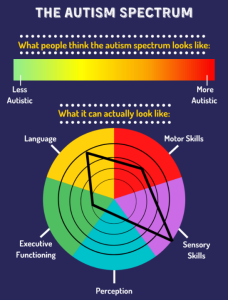Bleck JR, DeBate RD, Olivardia R. The Comorbidity of ADHD and Eating Disorders in a Nationally Representative Sample. J Behav Health Serv Res. 2015 Oct 1;42(4):437–51.
Brede, J., Babb, C., Jones, C. et al. (2020). For Me, the Anorexia is Just a Symptom, and the Cause is the Autism: Investigating Restrictive Eating Disorders in Autistic Women. J Autism Dev Disord 50, 4280–4296.
Curtin C, Pagoto SL, Mick E. The association between ADHD and eating disorders/pathology in adolescents: A systematic review. Open Journal of Epidemiology [Internet]. 2013.
Gesi C, Carmassi C, Luciano M, Bossini L, Ricca V, Fagiolini A, et al. Autistic traits in patients with anorexia nervosa, bulimia nervosa or binge eating disorder: A pilot study. European Psychiatry. 2017 Apr 1;41:S100.
Gillberg C (1983) Are autism and Anorexia Nervosa related? British Journal of Psychiatry 142: 428.
Kinnaird, E., Norton, C. & Tchanturia, K. (2017). Clinicians’ views on working with anorexia nervosa and autism spectrum disorder comorbidity: a qualitative study. BMC Psychiatry 17, 292.
Koch SV, Larsen JT, Mouridsen SE, Bentz M, Petersen L, Bulik C, Mortensen PB, Plessen KJ. (2015). Autism spectrum disorder in individuals with anorexia nervosa and in their first- and second-degree relatives: Danish nationwide register-based cohort-study. Br J Psychiatry. 206 (5):401-7.
Levin RL, Rawana JS. Attention-deficit/hyperactivity disorder and eating disorders across the lifespan: A systematic review of the literature. Clinical Psychology Review. 2016 Dec 1;50:22–36.
Mayes, SD, & Zickgraf, H. (2019). Atypical eating behaviors in children and adolescents with autism, ADHD, other disorders, and typical development. Research in Autism Spectrum Disorders, 64, 76-83.
Solmi, F F, Bentivegna, HB, William M, Radha K, Dheeraj R, David S, Glyn L. (2020). Trajectories of autistic social traits in childhood and adolescence and disordered eating behaviours at age 14 years: A UK general population cohort study. Journal of Child Psychology and Psychiatry,
Stewart CS, McEwen FS, Konstantellou A, et al. (2017) Impact of ASD Traits on treatment outcomes of eating disorders in girls. European Eating Disorders Review 25: 123–128
Tchanturia K, Larsson E and Adamson J (2016) How anorexia nervosa patients with high and low autistic traits respond to group Cognitive Remediation Therapy. BMC Psychiatry 16: 334.
Tchanturia, K, Adamson, J, Leppanen, J, & Westwood, H. (2019). Characteristics of autism spectrum disorder in anorexia nervosa: A naturalistic study in an inpatient treatment programme. Autism : The International Journal of Research and Practice, 23(1), 123-130.
Vuillier, L., Carter, Z., Teixeira, A.R. (2020). Alexithymia may explain the relationship between autistic traits and eating disorder psychopathology. Molecular Autism 11, 63
Westwood H, Mandy W and Tchanturia K (2017) Clinical evaluation of autistic symptoms in women with Anorexia Nervosa. Molecular Autism 16: 812.
Westwood, H., & Tchanturia, K. (2017). Autism spectrum disorder in anorexia nervosa: An updated literature review. Current Psychiatry Reports, 19(7), 41.
